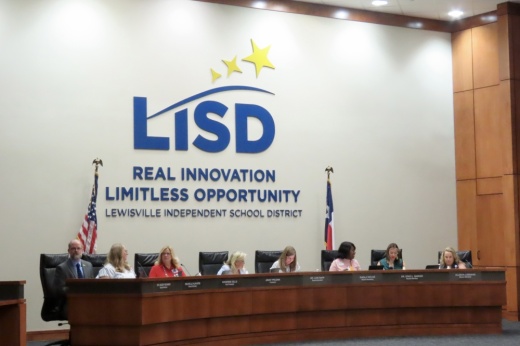“There is no doubt that in 21 years in the central office that this is one of the hardest budgets I have ever been a part of working on,” Superintendent Lori Rapp said.
The budget plans for $561.1 million in expenses and $556.6 million in revenue with a total tax rate of $1.1178 per $100 valuation, according to district documents. The total tax rate decreased by $0.0123 from last fiscal year.
The taxable value of an average residence within LISD decreased 2.6%, dropping from $449,582 in FY 2023-24 to $437,609 in FY2 2024-25, Chief Financial Officer Scott Wrehe said. This will result in a $189 decrease in residents' average tax bill.
The context
For LISD to provide the same level of support as it did in 2019—the last time the Texas Legislature changed the school funding model—the state would need to increase the basic per-student allotment by over $1,200, Wrehe said. The district is also experiencing an enrollment decline of around 800 students since the 2023-24 school year, which impacts funding.
In addition, utility costs such as water and electricity have risen 39% and 61% for the district, respectively, per district documents.
These factors contributed to the district anticipating a $14 million shortfall for FY 2024-25, before exercising cost saving measures to reduce the expected shortfall to $8 million in May.
These measures included removing double-block periods for English Language Arts classes at all middle schools, examining low-enrollment electives to ensure programming efficiency and rightsizing facilities to align with dipping enrollment, according to previous Community Impact reporting. Additionally, in 2023, LISD residents passed a voter-approval tax rate election generating $37.5 million for the district.
Further efforts—such as reductions in central office staff, lowering substitute fill rates and decreasing insurance premiums—reduced the shortfall to around $4.5 million, according to district documents. District officials also plan to cover the budget shortfall by dipping into LISD's fund balance, a district’s savings account. State law requires the district to maintain enough fund balance to cover three months of operating expenses. By the end of FY 2024-25, LISD’s fund balance will drop from $128.1 million—just under the $129.6 million required—per district documents.
What else?
District officials drafted a compensation plan in May that would provide a 1% of the midpoint raise for all staff and/or a one-time $500 payment. However, even with the reductions, LISD cannot afford the $3 million needed for the one-time payment or the $4 million to approve staff raises at this time, Rapp said.
The district will revisit the compensation plan after reviewing its fiscal bearings in late fall.
Adding to the district's financial issues, LISD will pay around $4.5 million to the Denton Central Appraisal District, which appraises many property values in the school district, after DCAD increased its FY 2024-25 budget, per previous Community Impact reporting.
“There is $3.9 billion allocated for public education that's sitting in Austin that belongs with teachers in the state of Texas," Rapp said. "All of us will not rest until we see that money returned to school districts and be able to pay our staff."





